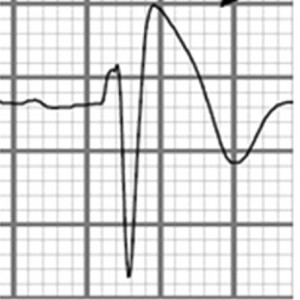A General Overview




It is named for the Spanish cardiologists Pedro Brugada, Josep Brugada and Ramon Brugada. It is the major cause ofsudden unexplained death syndrome (SUDS), also known as sudden adult death syndrome (SADS), and is the most common cause of sudden death in young men without known underlying cardiac disease in Thailand and Laos.
Brugada syndrome is differentiated into two main types: Type-I and Type-II depending on characteristic ECG patterns. In Type-I ECG as seen in the figure on the left, the T-wave is inverted and the ST interval is elevated. Type-II has a ‘saddleback’ ST-T wave configuration where the elevated ST-wave descends to a little over the baseline and then rises into an upright T-wave.